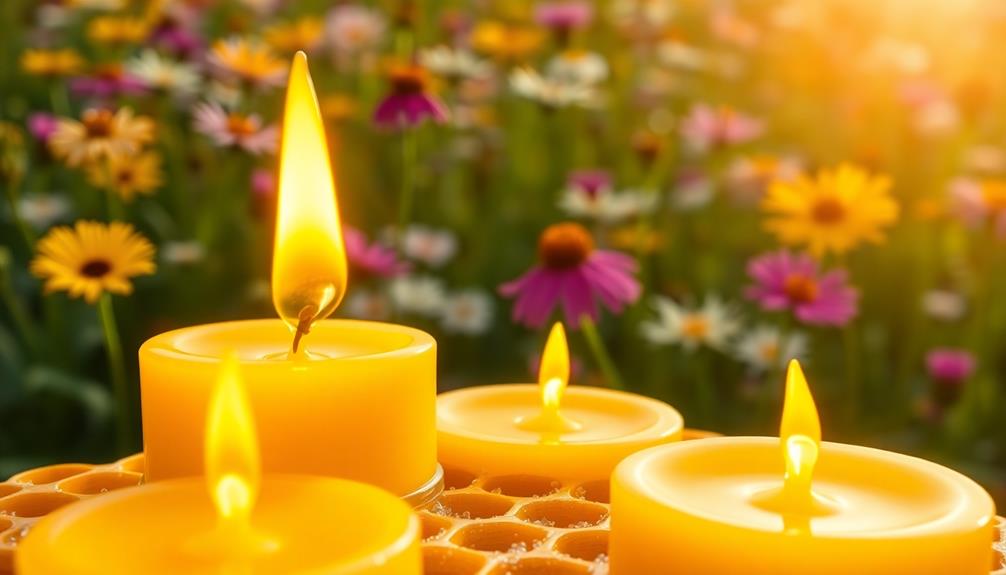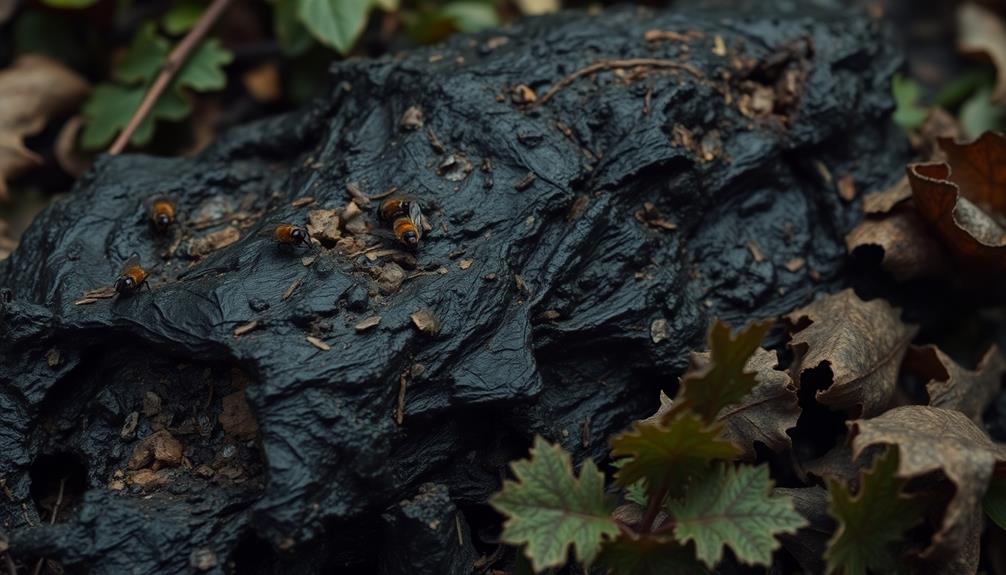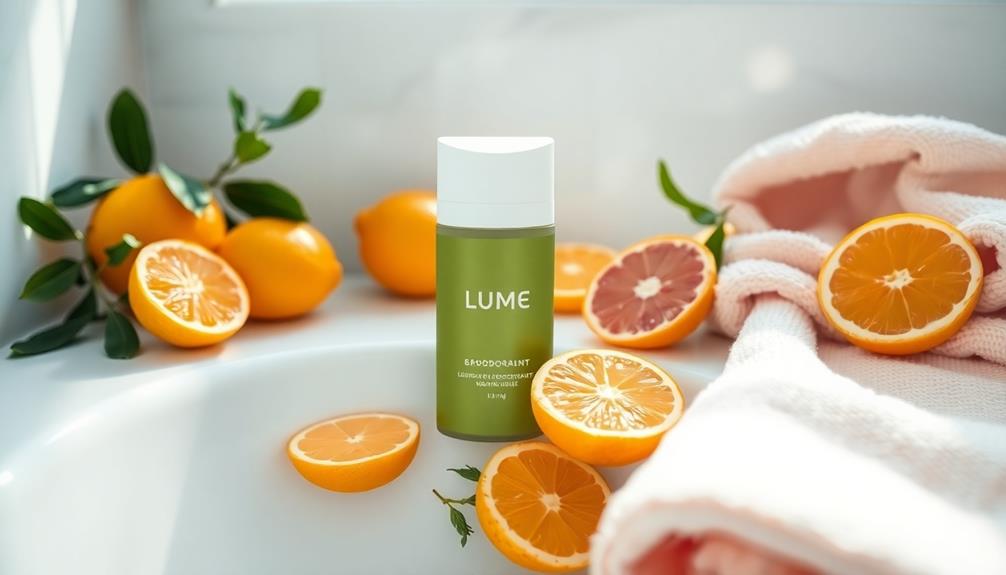Sol de Janeiro 87 smells like a sunny beach vacation! You'll first notice tropical notes of creamy coconut milk and warm sand that create a cheerful atmosphere. Then, as it settles, you'll enjoy floral scents of solar tuberose and ylang ylang mixed with juicy mango. The warm base of creamy vanilla and amber essence adds depth, giving it a cozy feel. This fragrance is perfect for summer parties or just relaxing outside. Plus, it's cruelty-free and vegan-friendly! So if you're curious about more details or how to enjoy this delightful scent, just keep exploring!
Key Takeaways
- Sol de Janeiro 87 features tropical top notes of creamy coconut milk, evoking a sun-soaked beach atmosphere.
- The heart contains floral scents of solar tuberose, ylang ylang, and juicy mango, adding fresh complexity.
- Base notes of creamy vanilla and amber essence provide a warm, nostalgic finish to the fragrance.
- The overall aroma is described as gourmand, reminiscent of baked sweets and sunny days.
- It captures the vibrant spirit of Rio de Janeiro in 1987, inspiring feelings of joy and carefree moments.
Introduction

Introducing Sol de Janeiro 87 Cheirosa Perfume Mist, you'll find a fragrance that captures the essence of sun-soaked beaches and vibrant celebrations.
This delightful scent takes you on a journey to the lively streets of Rio de Janeiro in 1987, where music and art filled the air. When you first spray it, you'll notice the tropical top notes of creamy coconut milk, mixed with warm sand, giving you that beachy vibe you love.
The heart of Cheirosa features a beautiful blend of floral fragrances, including solar tuberose, ylang ylang, and juicy mango. This combination provides a rich and fruity essence, making you feel like you're enjoying a summer day.
As the scent settles, you'll enjoy the base notes of creamy vanilla and amber essence, which add depth and warmth to the overall experience.
Whether you're heading to a party or just want to feel special during your day, Sol de Janeiro scents like Cheirosa 87 offer an uplifting, gourmand scent that's perfect for any occasion.
You're sure to feel transported to a sunny paradise with every spritz!
Description of the Smell

Sol de Janeiro 87's vibrant aroma invites you into a world of tropical bliss with its captivating blend of scents. As soon as you experience it, you'll notice the top notes of creamy coconut milk, which instantly take you to a sunny beach. This delightful scent mingles with warm sand, creating a cozy and inviting atmosphere that feels like a summer holiday.
In the heart of the fragrance, floral notes of solar tuberose and ylang ylang add a lively and fresh complexity, making the scent feel bright and uplifting. These floral elements dance around you, enhancing the joyful experience.
Then, you encounter the base notes of creamy vanilla and amber essence, which provide a rich, warm finish that wraps you in nostalgia.
Described as gourmand, Sol de Janeiro 87 reminds you of baked sweets and sunny days, making it perfect for daily wear or special occasions.
Source and Composition

Crafted with a blend of natural ingredients, Cheirosa 87 stands out for its vibrant composition that captures the essence of Brazilian culture.
You'll first notice the top notes of leite de coco, which gives a creamy, tropical opening that feels warm and inviting. It's like taking a deep breath of sunny beach air.
As the scent unfolds, the heart notes reveal the beauty of solar tuberose, ylang ylang, and juicy mango. This combination creates a rich floral experience that's both lively and enchanting.
When you reach the base notes, you'll find creamy vanilla and amber essence, which add a warm and comforting depth to the fragrance. Together, these layers evoke nostalgic and beachy memories, making you feel like you're lounging on a Brazilian beach in the summer sun.
Cheirosa 87 isn't just about the lovely scents; it's also cruelty-free and vegan-friendly.
Each spritz allows you to enjoy a tropical escape while staying true to your values. Dive into this delightful fragrance and let it transport you to a sunny paradise, reminding you of the beauty of nature and culture combined.
Typical Scenarios or Environments

Embracing the vibrant essence of Rio de Janeiro, Cheirosa 87 is perfect for sun-soaked days spent at the beach or lively summer gatherings. Picture yourself lounging on Copacabana Beach, surrounded by the sounds of laughter and waves. This fragrance captures that beach culture with its tropical notes of creamy coconut milk and warm sand, instantly transporting you to a carefree, sunny day.
As you bask in the sun, think about how cruise attire can enhance your experience, especially when attending festive beach parties or sunset cruises.
Whether you're attending a summer party or just enjoying a casual outing, Cheirosa 87 shines as ideal daytime wear. Its rich and indulgent vanilla and floral notes create a warm, inviting aroma that makes you feel special, even on ordinary days.
You can wear it while sipping coconut water with friends or dancing at an outdoor festival. The light and refreshing scent enhances your everyday routine, making you feel like you're on vacation, even when you're not.
Emotional or Cultural Associations

The vibrant atmosphere of Rio de Janeiro in 1987 comes alive through Cheirosa 87, creating a strong emotional connection for those who wear it. This fragrance captures the essence of Brazilian heritage, inviting you to experience the lively music, art, and beach parties of that time.
When you inhale its tropical notes of coconut milk and creamy vanilla, you can't help but feel a wave of nostalgia for sun-soaked days and carefree summer vacations. It's a reminder of the joyous moments that life offers, similar to the uplifting Psalm good morning Bible verses that inspire positivity and gratitude at the start of each day.
Cheirosa 87 is more than just a scent; it's a journey. Its blend of floral and gourmand notes brings forth positive emotions, reminding you of delicious treats and happy moments. Each spritz serves as a compliment magnet, making you feel warm and inviting, just like the Brazilian spirit.
Wearing Cheirosa 87, you're transported back to the vibrant energy of Brazilian life. It's like taking a mini-vacation every time you catch a whiff.
Whether you're at home or out with friends, this fragrance allows you to relive cherished memories filled with joy and warmth. So, embrace the essence of Rio and let Cheirosa 87 brighten your day!
Health or Safety Considerations

When choosing a fragrance like Sol de Janeiro Cheirosa 87, it's essential to consider health and safety. This fragrance isn't only vegan-friendly, meaning it contains no animal-derived ingredients, but it's also cruelty-free. That ensures no animals were harmed during its creation.
Plus, it's paraben-free, which means it avoids those harmful preservatives that can irritate your skin.
However, even safe ingredients can sometimes cause issues. This scent includes common fragrance allergens like Limonene and Linalool.
Final Thoughts

Choosing a fragrance like Sol de Janeiro Cheirosa 87 can truly elevate your daily routine. Imagine stepping into a warm summer day in Rio de Janeiro, where the air is filled with a delicious scent that wraps around your body like a cozy hug. This fragrance offers top notes of creamy coconut milk and warm sand, instantly transporting you to a tropical beach atmosphere.
The heart notes of solar tuberose, ylang ylang, and mango create a rich, floral experience that feels vibrant and alive. It's like carrying a piece of summer with you, no matter the season.
As you wear it, the base notes of amber essence and vanilla give a warm finish that feels comforting and sweet, reminiscent of baked treats enjoyed under the sun.
Cheirosa 87 blends sweetness and warmth, making it perfect for everyday wear or special occasions. Whether you're heading to a beach party or just running errands, this fragrance is versatile and delightful.
Frequently Asked Questions
Which Sol De Janeiro Scent Is Most Popular?
When you're exploring Sol de Janeiro scents, Cheirosa 62 stands out as the most popular. Its warm, sweet notes of pistachio and salted caramel create an indulgent and comforting fragrance that many adore.
Is 87 the Same as Rio Radiance?
Yes, Cheirosa 87 is part of the Rio Radiance collection. Both share similar tropical notes, but Cheirosa 87 specifically captures the essence of Rio de Janeiro's summer culture from 1987, enhancing that vibrant scent experience. The fragrance is a sun-soaked blend of luscious fruits and warm florals, evoking the golden sands and carefree energy of Brazil’s coastline. Cheirosa 87 layers beautifully with other scents in the collection, allowing you to experience the full spectrum of *Rio Radiance fragrance notes* for a multidimensional beachy vibe. Its irresistible aroma transports you straight to the heart of Rio’s unforgettable summer.
Does Sol De Janeiro 87 Exist?
Yes, Sol de Janeiro 87 does exist. It's a popular fragrance mist inspired by the vibrant culture of Rio de Janeiro, designed for both hair and body, providing a tropical aroma you'll love.
Which Sol De Janeiro Scent Lasts Longer?
If you're looking for longer-lasting scents, you'll find that the Rio Radiance Body Cream and Brazilian Crush Cheirosa 62 often outlast Cheirosa 87, especially when paired with their respective body creams for enhanced retention.









